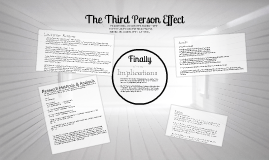Worry About Adults and How We Come to Believe in Lies
Whenever there is an incident that involves youth violence I get calls from journalists asking things like, “Can you comment on what’s happening with today’s youth?” “Why are they so violent” “Is social media the cause?” Lately, the focus is the undeveloped prefrontal lobe, with headlines such as “Inside your teenager’s scary brain” or “Wild teenage behavior linked to rapid cognitive change in the brain.”
I am concerned about what adults, notably through the gaming industry, are doing to sell increasingly violent and immersive products to young people. However, each time I get a call, I ask, “What about the adults?” More often than not there isn’t much interest in talking about what’s wrong with the adults, but there should be. After all, children didn’t vote for Donald Trump.
Children have no choice but to rely on the adults to determine their future. The question is, are we adults equipped to be the voice for the millions of children who are not permitted to vote? For various research projects, I have interviewed journalists, politicians, bureaucrats, academics, high school students and graduate students. What never ceases to fascinate me is the Third Person Effect. Most people I interview worry about the deleterious impact media has on peers and colleagues, which is paired with the confidence that media has minimal impact on their own thinking.
Media is ubiquitous, yet we rarely talk about who and what is behind how we come to know people with backgrounds different than our own. It is odd that given the major role media play in normalizing violence that in most schools it continues to be seen as a soft, optional subject. Post World War ll, a plethora of books were written about how so many adults came to believe in Hitler’s propaganda machine, and, as Hannah Arendt put it, participate in the “banality of evil.” In The Origins of Totalitarianism she showed how atrocities became normalized and normal people implemented them.
One could make people believe the most fantastic statements one day, and trust that if the next day they were given irrefutable proof of their falsehood, they would take refuge in cynicism; instead of deserting the leaders who had lied to them, they would protest that they had known all along that the statement was a lie and would admire the leaders for their superior tactical cleverness.
Initial coverage after Trump blamed Russian hackers, but soon it became clear that life has become more complex than one government hacking another. Algorithms that used psychometrics to conduct a detailed analysis of millions social media profiles, which provided data so detailed that political messages could be sent not just to a category (working class women) but to an apartment building with details based on the individual’s search patterns. What do you buy? What medical information do you seek on the Internet? Where do you lean politically? How much schooling do you have? Who is in your family and friend circles? “Alternative facts” can seamlessly show up tailored to your preferences and biases, just as the ads are that appear on your Facebook page are different than mine based on what we search for and who we interact with online.
We do not, as Stuart Hall reminded us, interpret media in the same way, but unlike even five years ago the capacity to market messages to us has become sophisticated far beyond the technological dystopias of Brazil or The Matrix, and with these developments, new forms of lifelong media education are needed.
Lifelong media education in the era of big data is vital. Today media education must examine how we (I include myself) freely share information about ourselves on social media that is then used to frame how we see others and ourselves. We must start with recognizing that we are in a similar situation to the children that rely on us in this new landscape. Our brains are underdeveloped for this new reality.
Media education includes understanding that a camera angle can make a person look like a monster or an angel and that a news frame can mean you see a Muslim terrorist as representative of his faith while a white Christian terrorist is framed as an unhinged outlier.
Whether we have a developed prefrontal lobe or not we are impacted by the words, images and sounds we see over and over. And we do need to work to find the stories we are not told even if they don’t concur with what we want to believe.
We need media education that helps us understand how our social media data is used to target our particular habits, validate our preferences, and wrongly confirm our prejudices that can have deadly impacts on our neighbors and the millions of children who count on adults to make good decisions on their behalf.
































































































